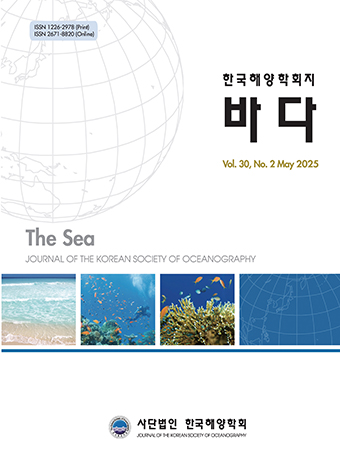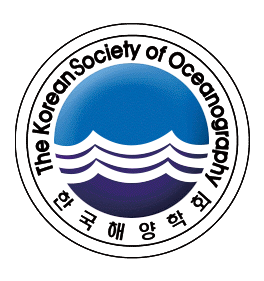Article
Abstract
References
Information
European Centre for Medium-Range Weather Forecasts (ECMWF), 2023. Available at: https://www.ecmwf.int/en/forecasts/dataset/ecmwf-reanalysis-v5. [last accessed: October 10, 2023].
Ferrón, S., D.A. Valle, K.M. del, Björkman, P.D. Quay, M.J. Church and D.M. Karl, 2016. Application of membrane inlet mass spectrometry to measure aquatic gross primary production by the 18O in vitro method. Limnology and Oceanography: Methods, 14(9): 610-622. DOI: https://doi.org/10.1002/lom3.10116.
10.1002/lom3.10116
Geurts, P., D. Ernst and L. Wehenkel, 2006. Extremely randomized trees. Machine Learning, 63(1): 3-42. DOI: https://doi.org/10.1007/s10994-006-6226-1.
10.1007/s10994-006-6226-1
Kim, D., M.-S. Choi, H.-Y. Oh, Y.-H. Song, J.-H. Noh and K.H. Kim, 2011. Seasonal export fluxes of particulate organic carbon from 234Th/238U disequilibrium measurements in the ulleung Basin1 (tsushima basin) of the east Sea1 (sea of japan). Journal of Oceanography, 67(5): 577-588. DOI: https://doi.org/10.1007/s10872-011-0058-8.
10.1007/s10872-011-0058-8
Le, T.T., W. Fu and J.H. Moore, 2020. Scaling tree-based automated machine learning to biomedical big data with a feature set selector. Bioinformatics, 36(1): 250-256. DOI: https://doi.org/10.1093/bioinformatics/btz470.
10.1093/bioinformatics/btz47031165141PMC6956793
Lee, S. and S. Yoo, 2016. Interannual variability of the phytoplankton community by the changes in vertical mixing and atmospheric deposition in the ulleung basin, east sea: A modelling study. Ecological Modelling, 322: 31-47. DOI: https://doi. org/https://doi.org/10.1016/j.ecolmodel.2015.11.012.
10.1016/j.ecolmodel.2015.11.012
Lipschultz, F., N.R. Bates, C.A. Carlson and D.A. Hansell, 2002. New production in the Sargasso Sea: History and current status. Global Biogeochemical Cycles, 16(1): 1-1-1-17, DOI: https://doi.org/10.1029/2000GB001319.
10.1029/2000GB001319
NASA, 2023. Available at: https://oceancolor.gsfc.nasa.gov/l3/. [last accessed: October 10, 2023].
Ocean Productivity, 2023. Available at: https://sites.science.oregonstate.edu/ocean.productivity/index.php. [last accessed: October 10, 2023].
Onitsuka, G., I. Uno, T. Yanagi and J.-H. Yoon, 2009. Modeling the effects of atmospheric nitrogen input on biological production in the japan sea. Journal of Oceanography, 65(3): 433-438. DOI: https://doi.org/10.1007/s10872-009-0038-4.
10.1007/s10872-009-0038-4
- Publisher :The Korean Society of Oceanography
- Publisher(Ko) :한국해양학회
- Journal Title :The Sea Journal of the Korean Society of Oceanography
- Journal Title(Ko) :한국해양학회지 바다
- Volume : 29
- No :1
- Pages :01-13
- Received Date : 2023-11-23
- Revised Date : 2024-01-05
- Accepted Date : 2024-01-06
- DOI :https://doi.org/10.7850/jkso.2024.29.1.001




 The Sea Journal of the Korean Society of Oceanography
The Sea Journal of the Korean Society of Oceanography








